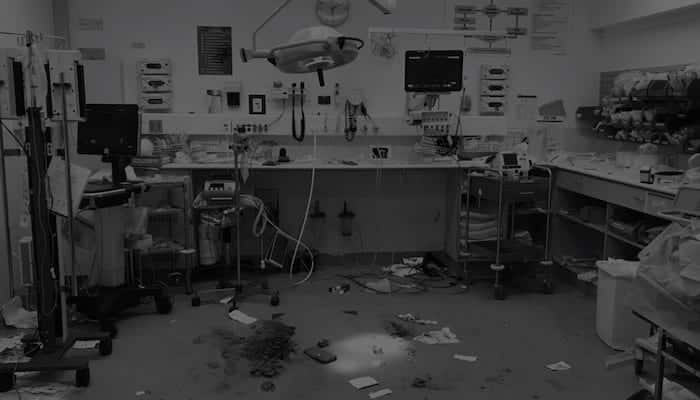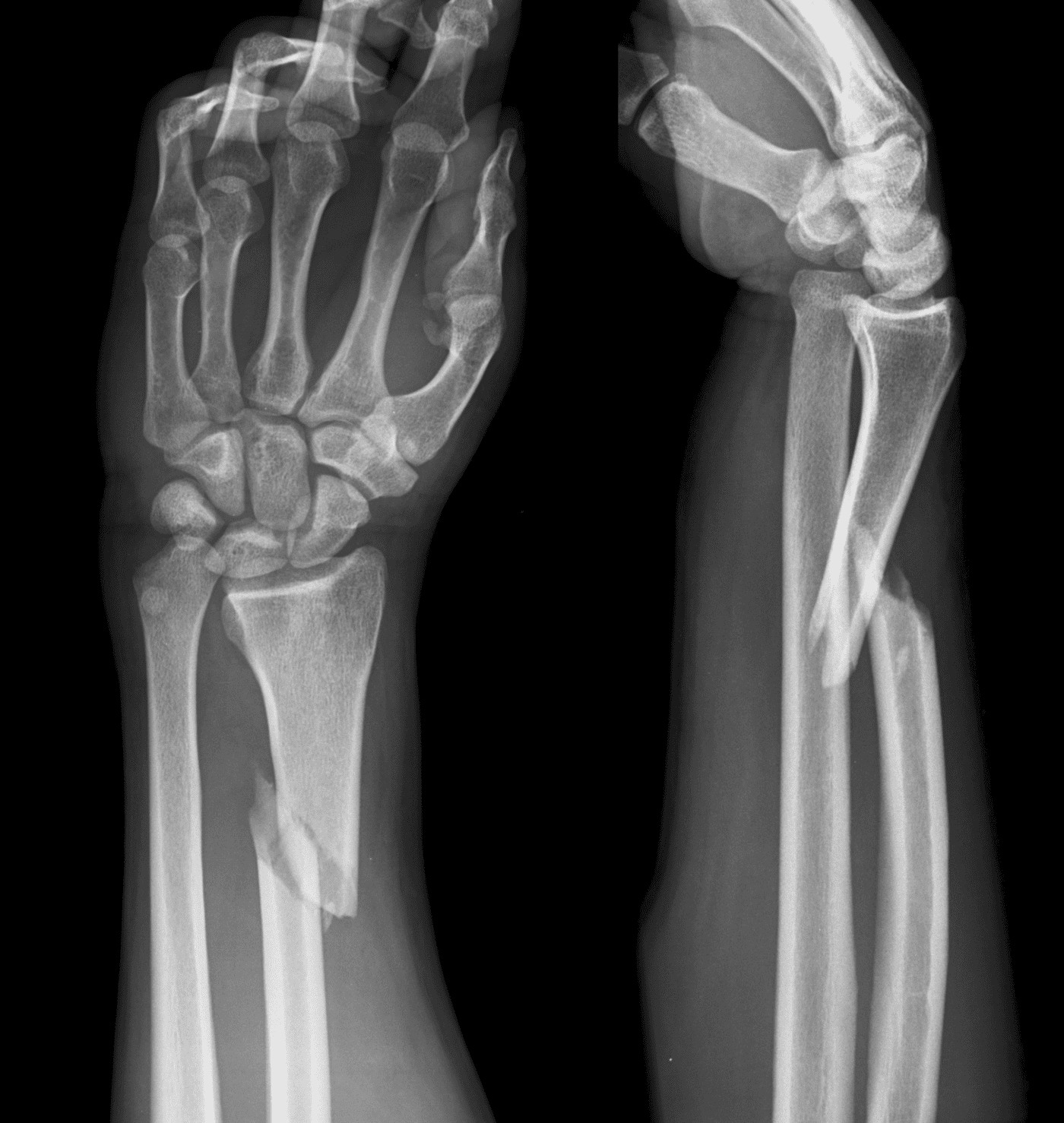ICE 001: Forearm injury
A 24 year old woman fell on an outstretched hand while playing netball.
Questions:
- Describe the findings on the X-ray
- What complications are associated with this injury ?
- What is the preferred management ?
Reveal the ICE answer
This X-ray shows a classic “Galeazzi” fracture dislocation. There is
- Dorsally angulated fracture in the distal third of the radius
- Palmar dislocation of the distal end of the radius
- Disruption of the distal radio-ulnar joint (DRUJ)
Clinically their presentation with pain and a deformed distal forearm is indistinguishable from that of the more typical fractures around the wrist (such as a Colles’ fracture). X-ray diagnosis needs careful viewing.
Galeazzi fractures are associated with a number of long term complications, especially when unrecognised or inadequately treated. They can cause long term instability of the DRUJ, limited forearm range of motion, chronic wrist pain and osteoarthritis.
In adults these fractures nearly always require open reduction and internal fixation. The radial fracture will usually be plated and then the DRUJ stabilised either with a plaster or percutaneous pin fixation. The stability of the DRUJ is usually assessed intra-operatively. In children Galeazzi fractures seem to be less often associated with long term DRUJ instability and may be treated with a closed reduction and long arm cast but careful orthopaedic follow up is still required.
References
- Eponymictionary – Galeazzi fracture
- Eponymictionary – Riccardo Galeazzi (1866 – 1952)

ICE CASES
Ian’s clinical emergencies
emergency physician keen on medical education and cycling


Can someone please annotate the X ray and guide as to how this shows palmar dislocation of the distal end of radius and also how this is a dorsally angulated fracture?